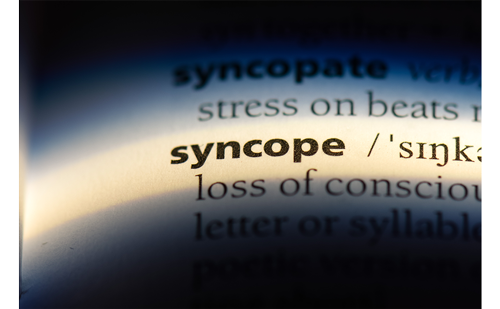Vasovagal syncope (VVS), the most common cause of fainting, is predominantly caused by an overactive vagal tone, leading to asystole, sinus bradycardia, or atrioventricular block.1 This condition, a form of neurocardiogenic syncope, is characterized by a pronounced vagal reflex that causes reflex-induced hypotension and bradycardia. Traditional management strategies, including increased salt and water intake, physical counterpressure manoeuvres and pharmacotherapy, have demonstrated limited effectiveness.2
The past decade has seen the rise of catheter ablation, or cardioneuroablation (CNA), as a new treatment option for VVS.3 CNA targets the ganglionated plexi (GPs) within the epicardial atrial fat pads.4,5 GPs are key intrinsic cardiac autonomic nervous system (ANS) components that significantly impact heart rate and cardiac function.4 The CNA technique has continued to develop since its inception in 2005,3 with various international groups developing individual approaches in an attempt to refine the approach to fit with the understanding of the anatomy and physiology of the GP sites and the relationship between these and triggering bradycardia.3,6
Despite widespread favourable outcomes reported in clinical trials, CNA has not achieved widespread acceptance and is absent from current syncope treatment guidelines, largely because of the lack of placebo-controlled randomized controlled trials (RCTs).7–9
The case for a placebo-controlled trial
Randomized, double-blind, and placebo-controlled trials are the gold standard for assessing the efficacy and safety of new therapies. Blinding and placebo control minimize bias and balance potential placebo effects (Figure 1).10,11
Figure 1:Additive model of treatment effects
McQueen D, Cohen S, St John-Smith P, Rampes H. Rethinking placebo in psychiatry: The range of placebo effects. Advances in Psychiatric Treatment. 2013;19:162–70, 2018 © Cambridge University Press, reproduced with permission.10
For VVS, RCTs have been used as the gold standard to ascertain the effectiveness of pharmacotherapy.11 A recent meta-analysis of 28 RCTs with 1,744 patients found that midodrine and fluoxetine (especially for anxious patients) were effective in reducing spontaneous syncopal events. No other medications showed significant efficacy in the network meta-analysis.12 However, patients who continue to be symptomatic despite conservative medical management with pharmaceuticals often require further intervention.
Historically, it was rare to have an RCT for interventional procedures. In a pivotal 2002 study, Moseley et al. investigated the effectiveness of knee arthroscopy for osteoarthritis, a widely practised procedure reported to alleviate symptoms in half of patients.13,14 The study involved arthroscopic debridement, lavage, or a placebo surgery mimicking arthroscopy but only involving a skin incision. With both patients and assessors blinded to the treatment group, the results revealed no significant differences in pain or function between the placebo and treatment groups after 2 years. This trial demonstrated the feasibility and importance of implementing placebo controls in studies of surgical interventions and changed the landscape of arthroscopic procedures for pain.
Ethical issues have been widely discussed regarding placebo-controlled surgical trials, particularly when procedures involve general anaesthesia and invasive surgical procedures in the placebo group.15 However, it has been deemed ethically acceptable provided that the conditions of scientific necessity, reasonable risks and valid informed consent are met. A recent systematic review found that of 172 placebo-controlled trials of surgical interventions, 49 involved the use of general anaesthesia.16
ORBITA (Objective randomised blinded investigation with optimal medical therapy of angioplasty in stable angina; ClinicalTrials.gov identifier: NCT02062593) is a recent landmark cardiology trial in intervention.17 This study demonstrated that in patients with medically treated angina and severe coronary stenosis, percutaneous coronary intervention (PCI) did not improve exercise time more than a placebo procedure. This also showed that the efficacy of invasive procedures can be assessed with a placebo control, as is standard for pharmacotherapy.
The team built on the success of this methodology with ORBITA-2 (A placebo-controlled trial of percutaneous coronary intervention for the relief of stable angina; ClinicalTrials.gov identifier: NCT03742050), which showed that PCI resulted in a lower angina symptom score than a placebo procedure.18 The forthcoming ORBITA-COSMIC (ClinicalTrials.gov identifier: NCT04892537) trial will use the same robust methodology to investigate the efficacy of the coronary sinus reducer.19 The ORBITA-STAR (ClinicalTrials.gov identifier: NCT04280575) and ORBITA-FIRE (ClinicalTrials.gov identifier: NCT05459051) studies are utilizing n-of-1 placebo-controlled experiments in the cardiac catheterisation laboratory to better define patients who may benefit from PCI.20,21 In the post-ORBITA era, placebo-controlled trials are increasingly expected in cardiovascular interventional studies.
Initial studies of pacemaker treatment for VVS consistently showed favourable outcomes; however, these studies were not double-blind or randomized.22–24 The VPS trial reported an 85.4% reduction in the relative risk of syncope when patients were randomly assigned to receive a pacemaker.24 However, the VPS-II trial reported no benefits when patients were randomized and blinded to receive active pacing versus no pacing.25 Similarly, the SYNPACE trial, another blinded RCT, demonstrated no significant benefits of pacing, particularly among younger patients.26 Sud et al. identified a pronounced ‘expectation effect’ whereby patients who were aware of their pacemaker experienced fewer recurrent syncope episodes.27
Closed-loop stimulation (CLS) pacing has emerged as a promising treatment option for a specific subset of patients who exhibit cardioinhibitory responses during head-up tilt table tests. A meta-analysis of eight studies has demonstrated that CLS significantly reduces syncope events, albeit with a moderate quality of evidence.28–36
In cardioneuroablation research, the placebo effect poses a considerable challenge in determining the actual efficacy of the treatment.37 The true therapeutic value of CNA can only be confirmed through methodologically robust, placebo-controlled RCTs. This is a critical step before CNA can be endorsed as a standard intervention and incorporated into guidelines. The absence of such CNA trials for VVS limits the interpretability of existing studies. These trials would allow for direct comparisons between CNA and other interventions, such as lifestyle modifications and pharmacological treatments, to discern the true effects of CNA.
Because CNA is only performed in a limited number of centres worldwide, establishing a standardized and universally accepted methodology is crucial for conducting robust multicentre trials. A unified approach would enhance research efficacy and pave the way for the broader clinical adoption of CNA for treating cardiac conditions.
A detailed methodology for cardioneuroablation was recently published by Aksu and Po.6 However, there is a significant variation in the techniques used for GP mapping before CNA.7 After a bipolar map of the atria is created, delineating key cardiac structures and GP identification can be achieved by using three major methods:
-
High-frequency stimulation applies short bursts of electrical energy to potential GP sites, eliciting a vagal response; however, its use is declining because of its lack of specificity and inability to reliably obtain the necessary stimulators needed to achieve high-frequency stimulation.
-
The anatomical approach targets GPs based on their relatively consistent locations among patients (many electrophysiologists prefer this method because of its practicality).
-
Electrogram analysis utilizes methods such as fast Fourier transform to analyse endocardial potentials, in which fragmented electrograms are thought to indicate the presence of GPs. This method has been refined by using high-pass filters and validated by using patterns of electrogram deflections. It has improved the identification and targeting of GPs, leading to shorter procedures and sustained success rates regarding patient outcomes across several CNA groups.6
In addition to these techniques, Pachon et al. developed a method involving extracardiac vagal stimulation via the jugular vein.38 This typically causes atrioventricular block or asystole, providing a functional upstream endpoint for CNA procedures.
Despite diverse strategies for locating and ablating GP sites for VVS treatment, clinical trials on CNA have consistently reported favourable outcomes.7 However, none of these have been placebo-controlled RCTs. There have been no reported significant complications of this procedure, with long-term follow-up available in several studies included in the meta-analysis, including studies that show sustained success rates of >90% over a 5-year follow-up duration.
Because of the limited number of patients experiencing refractory symptoms, few are eligible for this invasive treatment.7 Moreover, patients often experience VVS in clusters that occur randomly over time.37 Considering the unpredictable nature of syncope and the selected patient population, any placebo-controlled clinical trial would likely require a multicentre approach and ideally a standardized approach to ablation with a sufficient follow-up period to gather data to inform decision–making.
The European Society of Cardiology guideline committee has not yet endorsed CNA for syncope.9 Broader acceptance of CNA will require large multicentre trials and consensus on a standardized protocol used by the centres currently employing CNA.
Conclusion
Despite promising clinical outcomes, CNA efficacy has yet to be validated through randomized, placebo-controlled trials. These trials are necessary to overcome the substantial placebo effect observed in previous studies. The current guidelines for VVS treatment do not include CNA.9 This highlights the need for more rigorous research, including multicentre placebo-controlled RCTs, to establish CNA as a standard treatment for VVS and determine the optimal ablation strategy.







